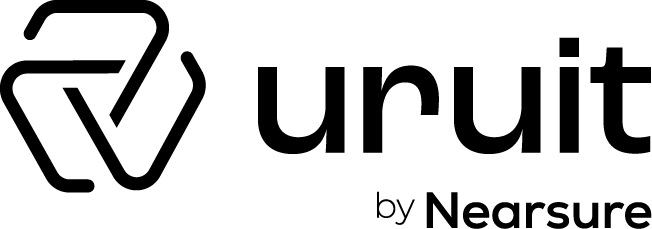Contents
Choosing outsourced Digital Product development team
Outsourcing your SaaS project has a lot of up-sides. You can keep costs down, engage top talent, and better scale your digital products. This isn’t to say outsourcing doesn’t come with challenges – it does. However, if you partner with the right firm those challenges can be easily overcome.
Today we’re going to look at SaaS project outsourcing: what it is, how you can onboard a remote team, and what benefits are to be had by outsourcing your SaaS project to South America.
SaaS project outsourcing
Outsourcing a SaaS project is the practice of engaging remote workers to plan, design, and build your SaaS platform. You might outsource part of the project, encouraging your local team to work with remote staff, or you could outsource the whole project to a comprehensive team of remote specialists.
A lot of businesses balk at the thought of outsourcing their SaaS projects. There’s an underlying worry that you may lose control of your projects or endure communication breakdowns. It’s true that these issues are possible, but they’re also very easily mitigated. By partnering with the right firm, you’ll be able to outsource your SaaS projects smoothly and effectively while benefiting from the many upsides that come with engaging remote teams.
Types of SaaS outsourcing
One of the main factors that affects a SaaS products’ outsourcing price, reliability, and quality is the hired team’s location. There are a number of different destinations you might choose from. SaaS teams can have wildly different rates depending on their location which means the project’s cost can differ significantly.
When it comes to the type of SaaS outsourcing location, you’re looking at the big three:
- Onshore
- Nearshore
- Offshore
Onshore
Onshore outsourcing is the practice of outsourcing your SaaS project within the same country. This type of location outsourcing is one of the most expensive because specialists’ hourly rates in the United States are typically the highest.
Nearshore
Nearshore outsourcing involves outsourcing your SaaS project to a country that is relatively close to the United States. This might mean engaging the services of developers in Canada or South America. Nearshore outsourcing, particularly to South America, is often the best of both worlds: you get the cost-effectiveness of offshore outsourcing while keeping the business hours of your teams within a reasonable range.
Offshore
Offshore outsourcing means outsourcing your SaaS project to a distant country with a major timezone difference. It’s often the cheapest outsourcing solution available to you but it comes with potential communication issues as your teams struggle with the timezone difference.
Benefits of outsourcing to South America
There are a number of innovative tech hubs located in Latin America. Outsourcing to any one of these can bring with it a slew of benefits, including:
Easier communication
Most of Latin America shares similar timezones with the United States. For example, Montevideo — the capital and largest city of Uruguay — is only one hour ahead of EST. This nearshore outsourcing ensures the team you engage is on the same page as you and able to be easily contacted within your typical business hours.
Real-time collaboration is essential for a successful SaaS project. Planning, designing, and developing a SaaS endeavor must be seamless and agile, something only achieved through consistent and easy communication with your team. Outsourcing to Latin America ensures your SaaS specialists are on hand when you need them every time.
Cost-effectiveness
Providing SaaS can get expensive fast. If you’re working with a limited budget, it makes a lot of sense to outsource your SaaS project to Latin America.
SaaS specialists in Latin America have a lower hourly rate, meaning your SaaS budget will be far more manageable than if you engaged talent in the United States. When outsourcing, you’re also not covering overhead costs like office space, benefits, and physical resources which will affect your costs immensely.
Quality of talent
South America overwhelmingly embraces technology and related expertise. Computer science university graduates number in the tens of thousands each year, rapidly expanding the talent pool from which US companies are able to draw.
Latin America is also on the rise when it comes to English proficiency and boasts a better quality of engineering work than Asia.
Tips for onboarding an outsourced team
Onboarding an outsourced SaaS project team can seem daunting at first, but there are some tried and true methods for ensuring your transition goes smoothly. Working with your outsourcing provider, you’ll be able to use the following to help you hit the ground running.
Train your local team
Before rolling an outsourced team into your project, you have to ensure your existing local staff are across the processes involved. They’re likely going to have questions about the changing landscape and might even need to raise concerns. Planning training sessions with your local team is an excellent way to facilitate constructive communication and ensure everyone is on the same page.
Concentrate on building relationships
Most typical workplace onboarding involves some variation on the “introduce yourself” concept. These sessions are often brief but that still works because over the following weeks your new staff member or team is able to establish relationships while on location.
When it comes to outsourcing, you don’t have the luxury of letting this process happen organically. To make your new team feel welcome and establish the sort of interpersonal relationships that make for a good workplace culture, you must be proactive.
Rather than a brief introduction on the first day, try starting each project meeting with short, informal conversations that will help your teams get to know each other. This will not only help with cohesion, but it’ll also help you establish a productive work environment.
Ensure you document your processes
Documenting your internal processes is a great way to keep all your staff on the same page. When it comes to outsourcing projects, this documentation can mean the difference between a smooth onboarding process or an extremely bumpy one.
It’s recommended that you keep up-to-date process documentation in a central repository that is easily accessible to your teams both local and outsourced. This will ensure your remote staff are able to refer to crucial information both during and after the training period.
Visit your team
Humans operate better face-to-face, this is just a fact. When it comes to onboarding a remote team, it can be extremely beneficial to meet with them in person. During your visit, you’ll gain an understanding of their work environment and be better able to establish an interpersonal relationship.
Meeting your team in person also gives you a measure of security and reassurance. You’ll be able to put faces to names and vet the team you’ll be working closely with over the course of your project. Having a team that’s a short flight away can be a great benefit.
Establish solid communication methods
Businesses have a slew of ways to connect. From email to video calls to instant messages to task management platforms, the modern world gives you a veritable smorgasbord of options with which to communicate with your outsourced team.
When onboarding a new staff member or team, the most valuable of these tools will be video conferencing. A lot of our day-to-day communication is non-verbal, so being able to see and speak to your team in real-time is one of the best ways to both train and maintain communication with them.
Learn about the culture
It’s inevitable that you’re going to run into cultural differences when outsourcing your work to a different country. This is the price you pay for the benefits of outsourcing.
To mitigate any potential issues or confusion, it can be helpful to take some time to read up on the country you’re outsourcing to. Learning about the culture of your remote workers is a great way to build strong working relationships based on respect. This, in turn, will help you achieve better project outcomes.
Schedule regular meetings
When engaging an outsourced team, it can be all-too-easy to feel disconnected. One way to mitigate this is to schedule regular catch-ups with your remote workers.
Scheduling daily team work-in-progress meetings is a great way to check in and ensure all your workers are across their to-do lists. These meetings might only take 15 minutes but they can make a massive difference and ensure your team feels connected.
Partner with the right remote firm
Successful outsourcing is all about choosing the right firm to partner with. With the right people on your side, you’ll be able to access the benefits of outsourcing while mitigating the downsides.
Here at Uruit, we’re a nearshore development company. Our delivery centers in South America —Uruguay and Colombia— are strategically based in tech-savvy cities, ensuring your next remote SaaS project is worked on by some of the top SaaS talent in the world.
Our high-performing teams deliver world-class work, offering real-time collaboration and quality guarantees to boot.
Have a SaaS project that would benefit from outsourced talent? Get in touch today and see what we can do to help your next project succeed. Are you curious to see how we worked with other clients? Take a look at our portfolio, more that 80% of our projects are with US-based companies.


